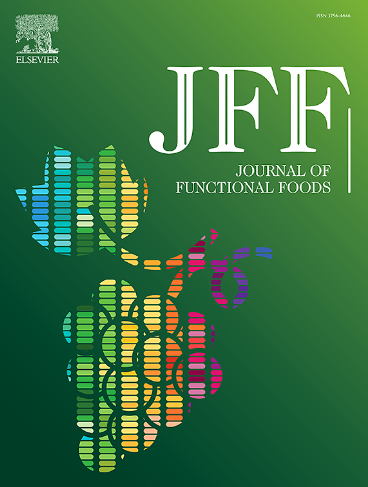释放甜菜碱的潜力:一种治疗糖尿病性勃起功能障碍的新途径
IF 3.8
2区 农林科学
Q2 FOOD SCIENCE & TECHNOLOGY
引用次数: 0
摘要
本研究探讨甜菜碱对糖尿病性勃起功能障碍(DMED)的治疗潜力。将DMED大鼠分为DMED、DMED+甜菜碱(Bet, 400 mg/kg)组和对照组。8周后,通过海绵体神经刺激评估勃起功能。评估后,对阴茎组织进行处理:去除多余的纤维组织,并将海绵体(CC)切开以供将来分析。分离海绵体平滑肌细胞(CCSMCs),用高糖(HG, 30 mM)±甜菜碱(1 mM)处理1周后进行分析。DMED大鼠表现为勃起功能受损,纤维化、炎症、细胞凋亡升高,IKK-α/NF-κB和HDAC3/NF-κB通路激活。在DMED大鼠和hg处理的CCSMCs中,甜菜碱恢复了勃起反应,改善了组织学,抑制了这些通路,减少了炎症、纤维化和凋亡标志物。结果提示甜菜碱通过抑制IKK-α/NF-κB和HDAC3/NF-κB信号通路减轻DMED,显示其作为一种新的DMED治疗方法的潜力。本文章由计算机程序翻译,如有差异,请以英文原文为准。

Unlocking betaine's potential: A novel therapeutic avenue for diabetes-induced erectile dysfunction
This study investigated betaine's therapeutic potential for diabetic erectile dysfunction (DMED). DMED rats were divided into DMED, DMED+Betaine (Bet, 400 mg/kg), and control groups. After 8 weeks, erectile function was assessed via cavernous nerve stimulation. Post-assessment, penile tissue was processed: excess fibrous tissue was removed, and corpus cavernosum (CC) was dissected into sections for future analysis. Corpus cavernosum smooth muscle cells (CCSMCs) were isolated, treated with high glucose (HG, 30 mM) ± betaine (1 mM) for one week, then analyzed. DMED rats exhibited impaired erectile function, elevated fibrosis, inflammation, apoptosis, and activation of IKK-α/NF-κB and HDAC3/NF-κB pathways. Betaine administration restored erectile response, improved histology, and suppressed these pathways, reducing inflammatory, fibrotic, and apoptotic markers in DMED rats and HG-treated CCSMCs. Results suggest betaine alleviates DMED by inhibiting IKK-α/NF-κB and HDAC3/NF-κB signaling, highlighting its potential as a novel DMED therapy.
求助全文
通过发布文献求助,成功后即可免费获取论文全文。
去求助
来源期刊

Journal of Functional Foods
FOOD SCIENCE & TECHNOLOGY-
CiteScore
9.60
自引率
1.80%
发文量
428
审稿时长
76 days
期刊介绍:
Journal of Functional Foods continues with the same aims and scope, editorial team, submission system and rigorous peer review. We give authors the possibility to publish their top-quality papers in a well-established leading journal in the food and nutrition fields. The Journal will keep its rigorous criteria to screen high impact research addressing relevant scientific topics and performed by sound methodologies.
The Journal of Functional Foods aims to bring together the results of fundamental and applied research into healthy foods and biologically active food ingredients.
The Journal is centered in the specific area at the boundaries among food technology, nutrition and health welcoming papers having a good interdisciplinary approach. The Journal will cover the fields of plant bioactives; dietary fibre, probiotics; functional lipids; bioactive peptides; vitamins, minerals and botanicals and other dietary supplements. Nutritional and technological aspects related to the development of functional foods and beverages are of core interest to the journal. Experimental works dealing with food digestion, bioavailability of food bioactives and on the mechanisms by which foods and their components are able to modulate physiological parameters connected with disease prevention are of particular interest as well as those dealing with personalized nutrition and nutritional needs in pathological subjects.
 求助内容:
求助内容: 应助结果提醒方式:
应助结果提醒方式:


